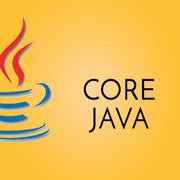Description
AP (Advanced Placement) Classes:
Many high school students choose to take AP courses due to their benefits while in high school, in college applications, and beyond. According to the College Board which administers the AP tests, “AP Gives students the chance to tackle college level work while they are still in high school and earn college Credit and placement.’’
Benefits of AP Classes:
More than a million students in America take AP classes because of the several benefits they provide. AP classes will…
1.Increase student’s chances of being admitted into top colleges.
2.Challenge students more than regular high school classes and prepare them for the demands of college.
3.Help students to obtain scholarships.
4.Enable students to receive college credit before starting college (if they score a 3 out of 5 or higher on the related exams).
5.Increase the likelihood that students will graduate earlier than normal time, thereby allowing them to save the money that extra semesters in college would cost.
Atomic Structure and Properties
Moles and molar mass
Mass spectroscopy of elements
Elemental composition of pure substances
Composition of mixtures
Atomic structure and electron configuration
Photoelectron spectroscopy
Periodic trends
Valence electrons and ionic compounds
Molecular and Ionic Compound Structure and Properties
Types of chemical bonds
Intramolecular force and potential energy
Structure of ionic solids
Structure of metals and alloys
Lewis diagrams
Resonance and formal charge
VSEPR and bond hybridization
Intermolecular Forces and Properties
Intermolecular forces
Solids, liquids, and gases
Kinetic molecular theory
Solutions and mixtures
Photoelectric effect
Chemical Reactions
Introduction for reactions
Net ionic equations
Representations of reactions
Physical and chemical changes
Stoichiometry
Types of chemical reactions
Kinetics
Reaction rate
Introduction to rate law
Elementary reactions
Collision model
Introduction to reaction mechanisms
Multistep reaction energy profile
Catalysis
Thermodynamics
Endothermic and exothermic processes
Heat transfer and thermal equilibrium
Heat capacity and calorimetry
Energy of phase changes
Introduction to enthalpy of reaction
Enthalpy of formation
Hess’s law
Equilibrium
Introduction to equilibrium
Calculating the equilibrium constant
Calculating equilibrium concentrations
Introduction to Le Châtelier’s principle
Introduction to solubility equilibria
pH and solubility
Free energy of dissolution
Acids and Bases
Introduction to acids and bases
pH and pOH of strong acids and bases
Acid-base reactions and buffers
Molecular structure of acids and bases
pH and pKa
Properties of buffers
Applications of Thermodynamics
Introduction to entropy
Gibbs free energy and thermodynamic favorability
Thermodynamic and kinetic control
Free energy and equilibrium
Galvanic (voltaic) and electrolyte cells
Electrolysis and Faraday’s law
Key Features:
Training Type: Online Live Interactive Session.
Experienced Faculty.
1 ON 1 Sessions.
Duration 40 Hours.
Access to Class Recordings.
Weekday / Weekend Classes.
Evening Schedule:
3 Days / Week
8:30 PM – 9:30 PM EST
9:00 PM – 10:00 PM EST
9:30 PM – 10:30 PM EST
10:00 PM – 11:00 PM EST
Morning Schedule:
3 Days / Week
10:00 AM – 11:00 AM EST
10:30 AM – 11:30 AM EST
11:00 AM – 12:00 PM EST
11:30 AM – 12:30 PM EST
Please contact us, If you are looking for different schedule or need more information.
Phone : 1+ 734 418 2465
Email : info@learntek.org
Inquiry Now
USA: +1 734 418 2465 | India: +91 40 4018 1306
The Advanced Placement (AP) is a trademark registered and owned by the College Board, which is not affiliated with Learntek.org, and does not endorse this product. All other trademarks and copyrights are the property of their respective owners
























 +91 40 4018 1306
+91 40 4018 1306 +1 734 418 2465
+1 734 418 2465 info@learntek.org
info@learntek.org
Reviews
There are no reviews yet.